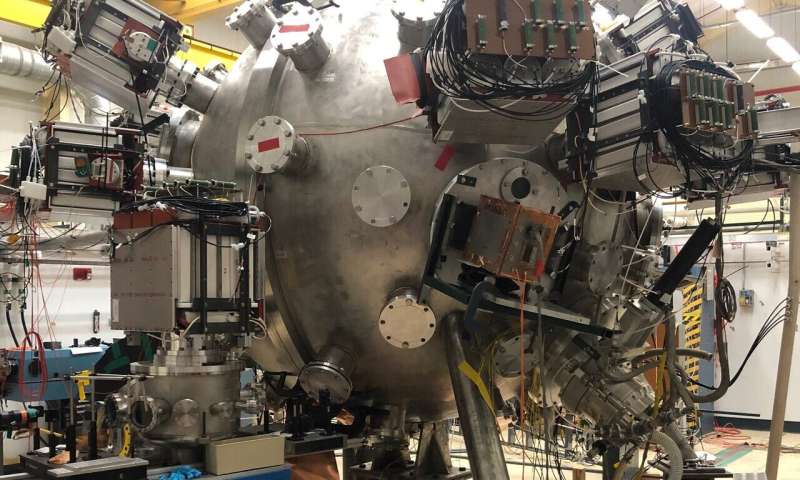Best of Last Week: Magneto-inertial fusion experiment, artificial leaves, and driving rats

It was a good week for physics, as a team working at Los Alamos National Laboratory announced that their magneto-inertial fusion experiment is nearing completion—they call it an ambitious approach to achieving controlled nuclear fusion. Also, a combined team of researchers from the universities of Alberta and Toronto created a blueprint for a quantum battery that doesn't lose charge—the tiny battery is meant to be used for applications on the nanoscale. And a team with members from several institutions in the U.S. and the Netherlands simulated the critical "reheating" period that kickstarted the Big Bang—and in so doing, found a way to bridge the gap between the Big Bang and cosmic inflation theories.
In technology development news, a team of engineers at MIT announced that they had developed a new way to remove carbon dioxide from air—by passing it through a stack of charged electrochemical plates. And a team at the University of Cambridge demonstrated an "artificial leaf" that successfully produced clean gas—it used water, sunlight and carbon dioxide to produce syngas. Also, representatives of Canonical announced the release of open-source operating system Ubuntu 19.10, and suggested that the release could stir the Linux pot with delighted users—they claimed also that it would accelerate developer productivity. And a team at the University of Michigan announced that they had developed a reservoir computing system for temporal data classification and forecasting to help with analyzing temporal applications such as videos, human speech and other streaming inputs.
In other news, a team at the University of East Anglia found that poor toilet hygiene, not food, spreads antibiotic-resistant E. coli superbugs—their study involved sequencing the genomes of resistant E. coli from multiple sources across the U.K. And a team at the University of Richmond reported that they had trained rats to drive tiny cars—and reported that the rats found it relaxing.
And finally, if you are among the millions of people around the world taking medication to control your blood pressure, you may want to note that an international team of medical researchers found that the most popular first-line treatment for hypertension is less effective than alternatives.
© 2019 Science X Network